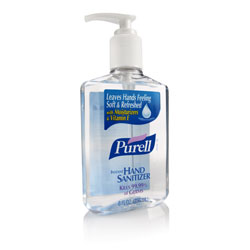Hand Sanitizer Alcohol Abuse
By Jenny Hunt
California authorities have noticed a shocking new trend in teenagers looking to get a quick high: Hand Sanitizer Alcohol Abuse. In the last week, at least six teens have checked in to LA area hospitals after allegedly imbibing hand sanitizer to get drunk. Hand sanitizer alcohol abuse has become the newest way for teens to get wasted.
Hand sanitizer alcohol abuse has gained popularity because it’s easily obtained by underage drinkers, is relatively cheap, and has very high alcohol content. The high alcohol content is part of the danger of hand sanitizer alcohol abuse. Hand sanitizers have alcohol concentrations of up to 70 percent—that’s 140 proof, whereas most liquors-whiskey, vodka, and gin, have a concentration of 45 percent alcohol (80 proof.) Often, teens engaging in hand sanitizer alcohol abuse down shots of the gooey liquid without realizing how much stronger it is. By the time the alcohol is metabolized, they have drunk far more than they realized. The accessability of the Internet has propelled hand sanitizer alcohol abuse as teens are finding recipes online to help make hand sanitizer more palatable. Some teens are mixing the gel with salt to break it down to a liquid.
Hand sanitizer alcohol abuse is just the latest development in bizarre teen drug use which includes vodka tampons and semi-legal synthetic drugs such as synthetic cannabis (“spice” or “K2) and bath salts. Both the risky behavior of teens and the danger of such drug use could be traced back to adolescent brain development. A recent study determined that brain development is not fully complete until age 25. Before the brain fully develops, it lacks the connections that allow reasoned decision making. This is why teens have poor impulse control and are somewhat lacking in common sense.
The fact that a teen’s brain and body has not fully developed makes hand sanitizer alcohol abuse and other forms of underage drinking more dangerous. Underage drinking can affect the brain’s development. Subtle changes in the brain may be difficult to detect but still have a significant impact on long-term thinking and memory skills. Underage drinking can also cause liver damage, especially if the teen is overweight or obese. In addition, drinking alcohol prior to or during puberty may upset the critical hormonal balance necessary for normal development of organs, muscles, and bones.
Some parents and school officials have made an effort to limit the availability of alcohol based hand sanitizer in homes and schools. However, hand sanitizer alcohol abuse isn’t that different from other types of teen substance abuse and the best way to combat it is with an open discussion. Unfortunately, more than a quarter of parents with teenage children have never had a discussion with them about alcohol or drug use. Parents are urged to be clear, firm and consistent when discouraging their teen from underage drinking and engaging in these risky new “legal” ways to get high. drug. Parents should also assure their teen that they will not be alone in turning down drugs and alcohol. In fact, teen alcohol abuse is on the decline nationally. Talking with your children early and often about hand sanitizer alcohol abuse can make a difference. It’s best to instill an open door policy about drugs and alcohol with your children.


